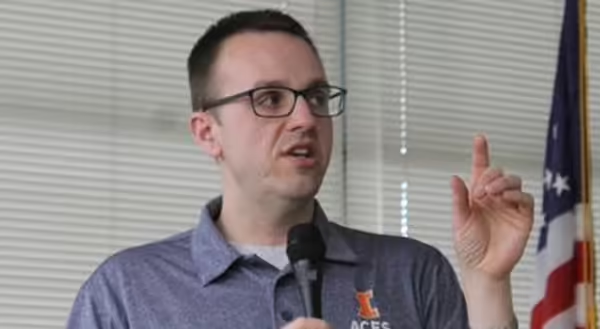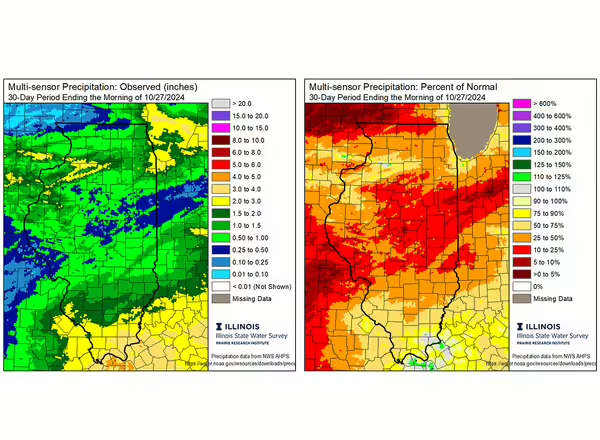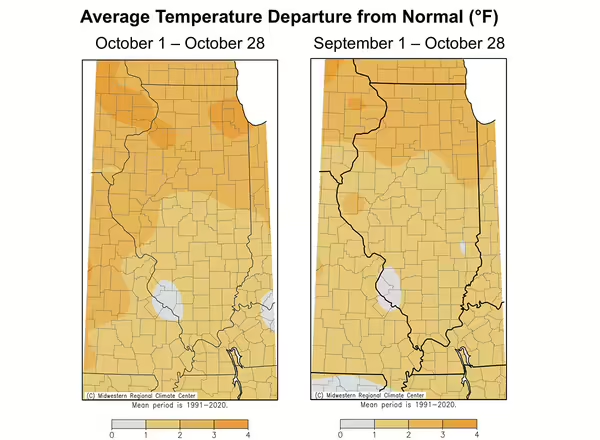
We are now nearly through two-thirds of the fall season, and many folks could be forgiven if they have forgotten what rain sounds like. Much of the state has had less than 1 inch of rain since late September, including parts of east-central Illinois that have seen less than half an inch over the past 30 days. Virtually the entire state has been drier than normal since late September and most of the state north of Interstate 64 has had less than 50% of normal rainfall over that time.
The dryness since the remnants of hurricane Helene came through southern Illinois has been remarkable, and added to what was a mostly dry September, too. The fall season to date has been a top 5 driest on record in the Quad Cities, Peoria, Bloomington-Normal, Champaign-Urbana, and Danville. Bloomington-Normal, for example, has only had 1.2 inches of rain through October 28th, which is nearly 5 inches drier than normal for the fall season.
The consequences of extremely dry conditions this season include very low stream and pond levels, bone dry soil down to – in some cases – 20 to 40 inches, and noticeable late season plant stress, especially to young trees. Mandatory watering restrictions are in place in many municipalities in the Chicagoland area, and fire risk remains elevated statewide. This is a good time to remind folks that your drought and condition reports are critical as drought continues in the state. Let us know what conditions look like in your neck of the woods using the Condition Monitoring Observer Reports system: go.illinois.edu/cmor.
Temperatures have remained on the mild side this month and for all the fall season so far. Average temperatures in October and for fall have been between 1 and 3 degrees above average statewide (Figure 2). Low humidity has pushed daytime high temperatures to regularly reach into the upper 70s and low 80s but have also allowed nighttime low temperatures to regularly dip into the 30s statewide. Virtually the entire state has had its first fall freeze, which was pretty much on time in northern and central Illinois and was a week or two earlier than normal in southern Illinois.

